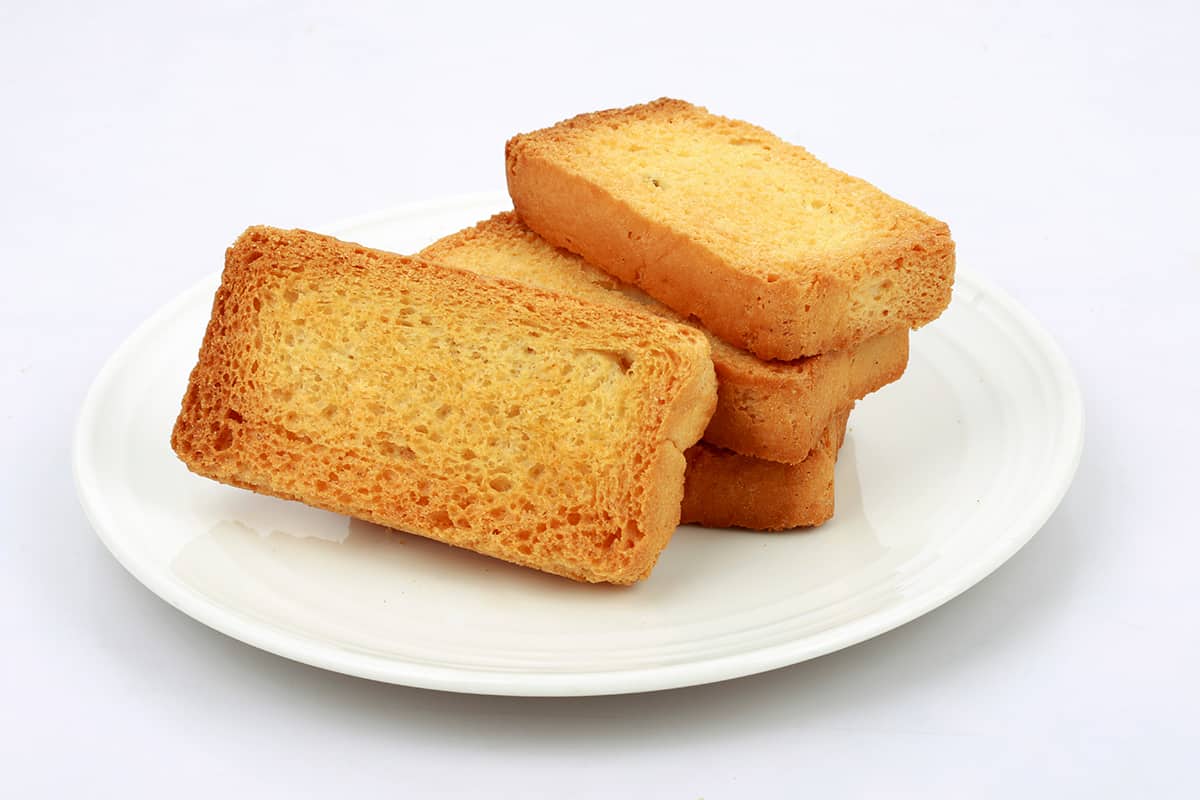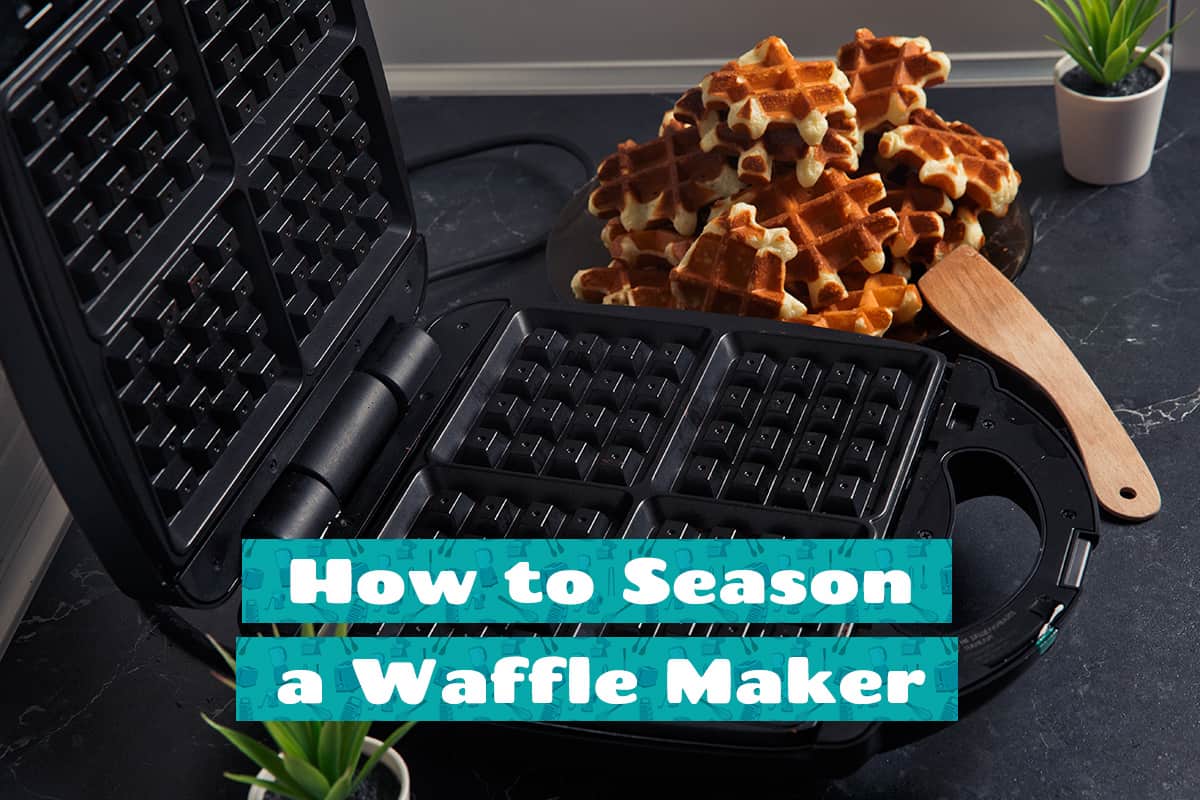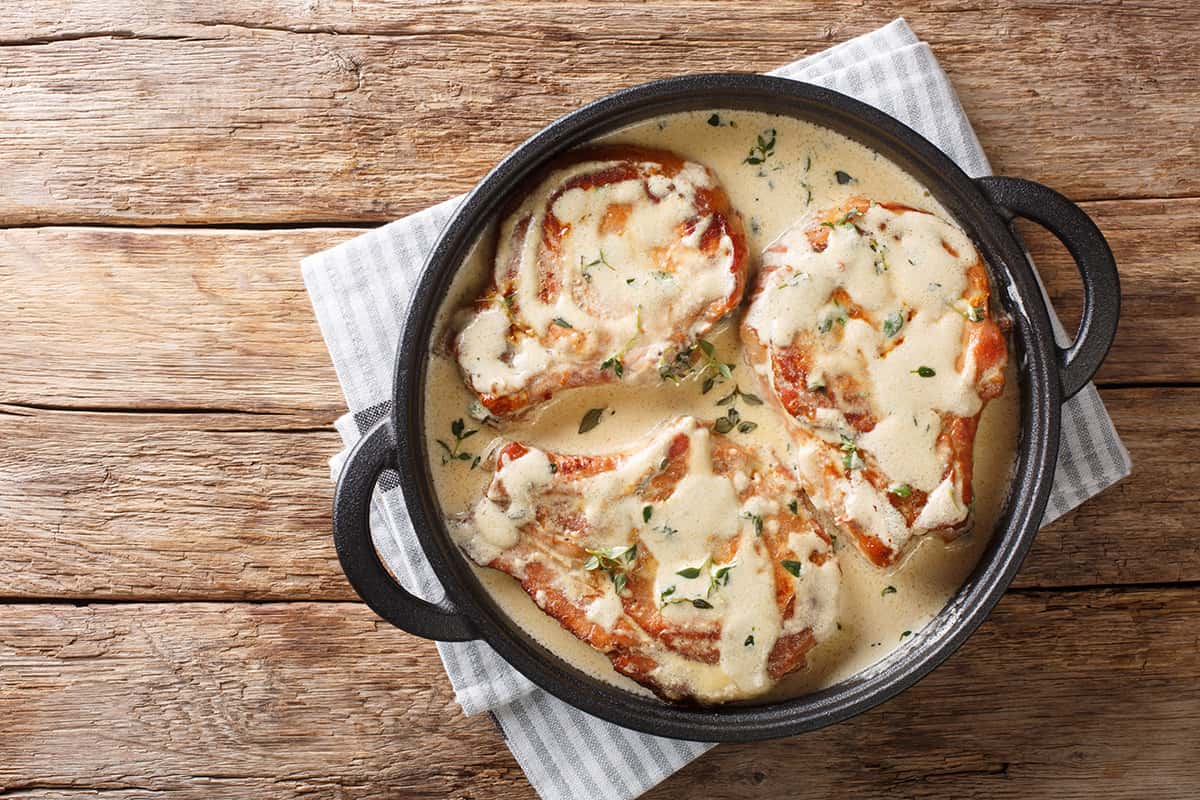Frying oil is a key component in many cooking methods, including deep frying, pan frying, and sautéing. The temperature of the oil can have a significant impact on the end result of your dish. When the oil is too cool, food may become greasy or overcooked on the outside while remaining
raw on the inside, but if the oil is too hot, food can become burnt or have an undesirable texture.
The temperature of the cooking oil should be based on the moisture content of your food, as well as how prone it is to sticking.
- High moisture—325 to 375°F
- Low moisture—375 to 400°F
- Delicate—325 to 350°F
In this guide, I’ll cover the importance of frying oil temperature, what factors will affect the desired cooking temperature, and what you can do to maintain a steady temperature for the best frying results.
Basics of Frying
Deep frying, in which food is cooked in hot oil or fat, is a common cooking technique. It is commonly used to make the exterior crisp and golden to brown while keeping the interior juicy and tender. Here’s a quick lesson on how you can deep-fry food safely and achieve the best results.
- Choose the right oil—The point at which an oil begins to break down and release harmful fumes is known as its smoke point, and this varies from oil to oil. Vegetable oil, canola oil, and peanut oil are some of the most popular options for frying. Select an oil with a high smoke point that works well with the food you intend to fry.
- Preheating the oil— Before adding the food, the oil must be heated to the proper temperature. This will ensure that the food is cooked thoroughly and to the right consistency. For precise control over the oil’s heat, a cooking thermometer can be an invaluable tool.
- Using the correct equipment— For frying, you can use either a deep fryer or a heavy-bottomed pot with high sides. Carefully dropping food into the oil and then retrieving it once it’s cooked is best done with a slotted spoon or wire mesh skimmer.
- Drying the food thoroughly— To avoid splattering, make sure the food is completely dry before adding it to the hot oil. Drying food can be done by airing it out for a few minutes or patting it dry with a paper towel.
- Be careful when adding the food to the oil— Use a slotted spoon or wire mesh skimmer to carefully lower the food into the oil. You can also use your hands if you don’t the heat so much. It’s best not to crowd the pan as this will cause the oil temperature to drop and the food to cook unevenly.
Why Does Frying Oil Temperature Matter?

When using oil or fat for frying, you need to make sure the oil’s temperature is just right. The food’s texture, flavor, and overall quality may be drastically altered by the oil’s temperature. To better understand the significance of the frying temperature, consider the following:
How quickly food is cooked depends on how hot the oil is. Food may take longer to cook in oil that isn’t hot enough, leading to an oily, overcooked exterior and a raw, undercooked interior. However, if the oil is too hot, the food may cook too quickly, resulting in a burnt flavor or a texture that doesn’t quite work.
Food’s flavor and texture can also be modified by the oil’s temperature. Overheated oil can ruin food’s texture and flavor. However, if the oil isn’t heated to the proper temperature, the food may become greasy and soggy.
For health and safety reasons, frying at the right temperature is crucial. Splattering and burns are possible if the oil is too hot. Moreover, the oil’s smoke can be toxic if it’s allowed to heat beyond its smoke point.
Frying Oil Temperature Chart
Below, I’ll provide 2 temperature charts—one for different food groups, and another for specific deep-fried foods you should definitely try.
Food Groups
| Food Group | °F | °C | Suggested Frying Time |
| Lightly battered or breaded foods | 350 to 375 | 177 to 191 | 3 to 5 minutes |
| Heavy battered or breaded foods | 375 to 400 | 191 to 204 | 5 to 7 minutes |
| Doughnuts | 365 to 375 | 185 to 191 | 2 to 3 minutes per side |
| French fries | 325 to 375 | 163 to 191 | 4 to 5 minutes |
| Chicken | 350 to 375 | 177 to 191 | 8 to 12 minutes |
| Fish | 375 to 400 | 191 to 204 | 3 to 4 minutes per side |
| Vegetables (onion rings, zucchini slices) | 350 to 375 | 177 to 191 | 2 to 3 minutes |
Popular deep-friend dishes
| Food | °F | °C | Suggested Frying Time |
| Apple pies | 375-400 | 191-204 | 3-4 minutes |
| Arancini | 350-375 | 177-191 | 3-4 minutes |
| Avocado | 375-400 | 191-204 | 3-4 minutes |
| Banh ran | 350-375 | 177-191 | 3-4 minutes |
| Beer-battered hot dogs | 375-400 | 191-204 | 3-4 minutes |
| Beignet | 365-375 | 185-191 | 2-3 minutes per side |
| Boxty | 350-375 | 177-191 | 3-4 minutes |
| Brussels sprouts | 375-400 | 191-204 | 3-4 minutes |
| Butter | 350-375 | 177-191 | 2-3 minutes |
| Cactus fries | 350-375 | 177-191 | 3-4 minutes |
| Caprese | 375-400 | 191-204 | 3-4 minutes |
| Churros | 365-375 | 185-191 | 2-3 minutes per side |
| Corn-on-the-cob | 350-375 | 177-191 | 3-4 minutes |
| Cupcake nuggets | 375-400 | 191-204 | 3-4 minutes |
| Deep big mac | 375-400 | 191-204 | 3-4 minutes |
| Deep cheesecake | 375-400 | 191-204 | 3-4 minutes |
| Deep meringues | 350-375 | 177-191 | 2-3 minutes |
| Deep oreo | 375-400 | 191-204 | 3-4 minutes |
| Deep stuffing on a stick | 375-400 | 191-204 | 3-4 minutes |
| Falafel | 350-375 | 177-191 | 3-4 minutes |
| Glazed apple fritters | 365-375 | 185-191 | 2-3 minutes per side |
| Green tomatoes | 350-375 | 177-191 | 3-4 minutes |
| Ice cream | 350-375 | 177-191 | 2-3 minutes |
| Leche frita | 350-375 | 177-191 | 3-4 minutes |
| Mac & cheese | 375-400 | 191-204 | 3-4 minutes |
| Nutella banana croissant sandwiches | 375-400 | 191-204 | 3-4 minutes |
| Peanut butter and jam sandwiches | 375-400 | 191-204 | 3-4 minutes |
| Peanuts | 350-375 | 177-191 | 3-4 minutes |
| Pecan pie | 350-375 | 177-191 | 3-4 minutes |
| Penne | 375-400 | 191-204 | 3-4 minutes |
| Pickles | 350-375 | 177-191 | 2-3 minutes |
| Pizza | 375-400 | 191-204 | 3-4 minutes |
| Pumpkin fries | 350-375 | 177-191 | 3-4 minutes |
| Rosettes | 365-375 | 185-191 | 2-3 minutes per side |
| Scotch egg | 375-400 | 191-204 | 8-10 minutes |
| Scraps | 350-375 | 177-191 | 3-4 minutes |
| Spice bag | 375-400 | 191-204 | 3-4 minutes |
| Strawberries | 350-375 | 177-191 | 2-3 minutes |
| Struffoli | 365-375 | 185-191 | 2-3 minutes per side |
| Turkey | 350-375 | 177-191 | 8-12 minutes |
| Zalabia | 365-375 | 185-191 | 2-3 minutes per side |
| Zeppole | 365-375 | 185-191 | 2-3 minutes per side |
What Is the Maillard Reaction?

If you’ve been binge-watching cooking shows or YouTube video tutorials, then you’ve probably heard the phrase “Maillard Reaction” before. So, what in the heck is it?
The Maillard reaction, also known as the “browning reaction,” is a chemical reaction that results in the formation of complex flavor and aroma compounds when proteins and sugars are heated together. It is named after Louis-Camille Maillard, a French chemist who first described the reaction in 1912.
The Maillard reaction causes browning in many foods, including bread, coffee, and meat. To a large extent, it is responsible for the flavor of many processed foods, making it a crucial ingredient in the food industry. Some food additives, like caramel coloring and flavors, rely on it as a key ingredient.
A typical range for this chemical reaction is between 284 and 335°F (140 and 168°C). Sugars are broken into smaller molecules, which then react with the amino acids in proteins to produce a wide range of compounds, such as furans, pyrroles, and thiophenes. Flavor and aroma are derived from these chemical compounds.
Can You Deep-Fry Food in Butter?
Butter is one of the most versatile fats on the planet. You can pan-fry stuff with it, you can spread it on toast. But the question remains: can you deep-fry food with butter?
Technically, you can, but I wouldn’t recommend it.
The butter’s smoke point is a major factor. Butter can easily catch fire due to its low smoke point of about 350°F (177°C). In some cases, this can cause the fried food to taste burnt or otherwise unpleasant.
The price of butter, if you plan on using it for deep frying, is something else to keep in mind. Cooking oils like vegetable oil and canola oil tend to be cheaper than butter.
How Do You Dispose of Old Cooking Oil?
Get rid of your old cooking oil if it is past its prime. However, you shouldn’t dump it down your sink’s drain since it can solidify and cause major problems in the future.
Follow these steps to get rid of old cooking oil safely and responsibly:
- Allow the oil to come down to room temperature. The oil should be allowed to cool completely before being discarded. Splashes and spills of hot oil pose a serious risk of burns and fire.
- Strain the oil. A fine-mesh strainer or some cheesecloth can be used to remove any debris or food particles from the oil.
- Pour the oil into a sealable container. Put the oil in a container with a tight-fitting lid, such as a plastic bottle or a can. Make sure the container is leak-proof and will hold its contents securely.
- Take the old oil to a recycling center. Some cities and towns have programs in place for collecting used cooking oil, so check with your local government to see what options are available. Check this out if you don’t know where your local oil recycling center is located.


